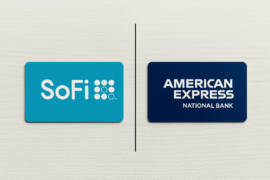This article may contain references to products or services from one or more of our advertisers or partners. We may receive compensation when you click on links to those products or services. Nonetheless, our opinions are our own.

Updated by Albert Fang
Bank statements might seem boring, but they’re actually a treasure trove of information and can give you an instant overview of your finances. The trick is to analyze them efficiently, and do this regularly. Here’s how to go about it.
- The Necessity of Tools for Format Conversion
- Choosing The Right Format for Analysis
- Identifying Key Fields in Your Bank Statements
- Categorizing and Understanding Your Transaction History
- Breaking Down Spending Habits
- Monitoring Unusual Transactions
- Analyzing Income Patterns from Multiple Sources
- Leveraging Personal Finance Software For Analysis
- Final Thoughts
- Recommended Reads
The Necessity of Tools for Format Conversion
If you’re struggling to collate data from your bank statements due to format incompatibility, or the fact that they’re still sent to you physically, then the solution lies in the hands of modern digital tools designed explicitly for this purpose.
Take DocuClipper’s bank statement converter as an example. It’s equipped with the ability to automatically convert paper statements into the digital format of your choice, and can also extract data from PDFs so that you can use it in Excel, QuickBooks or whatever platform you choose.
Leveraging such advanced tools lets you save significant amounts of time and also simplify the financial analysis process enormously by filtering essential information out of the deluge of data.
Choosing The Right Format for Analysis
Once you have successfully extracted your data from the bank statement, choosing the right format can be crucial in unlocking key insights. Here are some versatile formats that you might consider:
- CSV: Simple yet powerful, CSV (Comma Separated Values) files offer compatibility with numerous platforms and provide structure in a compact, easy-to-understand manner.
- Excel Files: Excel is a stalwart amongst financial analysis tools because of its extensive feature set, including filters, charts, and formula calculations. It helps to scrutinize trends over time effortlessly, and using spreadsheet templates makes this easier.
- SQL Database: If you’re dealing with substantial amounts of data, or if there’s demand for deeper relational analysis between different datasets, SQL databases can help to store and query such information adeptly. It’s preferred by business users, but not totally out of the grasp of individuals either.
- JSON Files: These are ideal for programming savvy individuals who want to combine their financial analytics with custom-built algorithms and applications. You can also import JSON to Google Sheets to quickly organize and analyze data in a familiar spreadsheet format.
Also bear in mind that if you’re using a dedicated accounting platform, there may be specific file formats or even bespoke file types that are preferred by the vendor. In the case of QuickBooks, the QBO file type is the one that’s used for bank statements, for example. This info will help you to decide on which formats to choose during the conversion process.
Identifying Key Fields in Your Bank Statements
Learning to comprehend your bank statements can seem daunting, but focusing on important components helps simplify the process. Here are several vital fields:
- Account Balance: This reflects your starting and ending balance during a specific period.
- Transaction Details: Specifications like date, description (name of the business), transaction amount as well as category (debit or credit) assist you in tracking your spending habits.
- Account Charges: Look out for things such as late penalties, bounced-check charges and perhaps hidden maintenance fees.
Of course this standard format may vary between banks, so get familiar with these segments so you can maximize financial decisions based on what your statement tells you.
Categorizing and Understanding Your Transaction History
Digging deeper into your bank statements can offer vital insights about financial habits. Effective categorization of your transaction history is a must. Here are some categories to consider:
- Living Expenses: This can include rent or mortgage payments, groceries, utilities, and other day-to-day expenses.
- Discretionary Spending: Costs related to entertainment or luxury items fall under this category, such as dining out, vacations and streaming services.
- Savings: This covers amounts allocated towards retirement funds, emergency savings or future investments.
Systematically categorizing and understanding transactions in this way gives you a clearer sense of how your money flows each month. Monitor these categories over time, as recognizing patterns could alert you to unnecessary spending while also facilitating better budgeting strategies.
Breaking Down Spending Habits
Analyzing your spending habits in more detail allows you to optimize your financial health. Here are a few points of focus when carrying out this task:
- Monthly Bills: Keep an eye on recurring bills for utilities, subscriptions or any other services.
- Impulse Purchases: If you see repeated instances of unplanned expenditure, identify them and try to cut back.
- Large Expenses: Major spending can greatly impact your savings ratio. Analysis will let you work out if these are necessary costs, or areas where you could economize.
- Ratio Analysis: It’s useful to look at what percentage of your income is spent compared with the proportion saved each month. This is a good way to work towards your financial goals in less time, and also to encourage good habits while quashing bad ones.
Categorizing the small and seemingly insignificant details in this way gives you an overview of what might be major patterns in spending. Evaluating such trends lets you make decisions with confidence, and keep your finances on firmer ground.
Monitoring Unusual Transactions
Keeping an eye on the unusual transactions is critical not just for identifying anomalies, but also for enhancing your financial safety. Here’s what to look out for:
- Unknown Charges: If you come across charges from unrecognized sources, it could indicate possible fraud or identity theft. While most banks have automated systems to detect and deflect these, any that slip through the net need to be pounced upon and auctioned at your end.
- Higher than Usual Bill Amounts: An abnormally high utility or subscription bill might be due to a mistake that needs rectifying.
- Multiple Small Transfers: Frequent small amounts being drafted continuously perhaps unnoticed can add up over time.
Regular monitoring of transaction history forms an essential part of securing your finances. Practicing it diligently will ensure healthier habits while mitigating any potential risks too, and the analysis advice we’ve outlined will make it easier to achieve.
Analyzing Income Patterns from Multiple Sources
Understanding income patterns is vital if you have streams of revenue from multiple sources. Here’s what to pay attention to:
- Regular Paychecks: That you’re getting paid on time each week or month, and that the amounts align with your work contracts.
- Investment Returns: Continuous review of dividends, interest or rental income helps gauge overall return on investments. It also means you don’t need to rely on data from a third party financial advisor to see how your portfolio is faring.
- Freelance/Part-time Earnings: Monitor consistency and the timeliness of payment for side hustles. This is not just for your own records, but for streamlining the tax filing process as well.
Having a comprehensive grasp of all your income avenues not only provides clarity but also aids in more accurate budget planning. Furthermore, it acts as a crucial safeguard protecting against any potential unpaid dues or discrepancies. Information is power, and analyzing bank statements gives you this by the bucketload.
Leveraging Personal Finance Software For Analysis
To further streamline your financial management, consider feeding the data you glean from bank statements into software solutions such as:
- Mint: Track bills, budgets and receive credit score updates.
- You Need A Budget (YNAB): Create custom budget lines for managing money.
- Quicken: Offers robust tracking of income, expenses, property value and investment performance.
These tools can be immensely helpful in automating the process of monitoring statements while providing visual representations to aid comprehension.
Final Thoughts
In short, it’s a good idea to get serious about analyzing bank statements. With the tips and tools we’ve talked about, you’ll be the master of your money, rather than feeling like you’re beholden to it.

Reviewed and edited by Albert Fang.
See a typo or want to suggest an edit/revision to the content? Use the contact us form to provide feedback.
At FangWallet, we value editorial integrity and open collaboration in curating quality content for readers to enjoy. Much appreciated for the assist.
Did you like our article and find it insightful? We encourage sharing the article link with family and friends to benefit as well - better yet, sharing on social media. Thank you for the support! 🍉
Article Title: How To Analyze & Unlock Key Insights From Your Bank Statements?
https://fangwallet.com/2023/12/12/how-to-analyze-unlock-key-insights-from-bank-statements/The FangWallet Promise
FangWallet is an editorially independent resource - founded on breaking down challenging financial concepts for anyone to understand since 2014. While we adhere to editorial integrity, note that this post may contain references to products from our partners.
The FangWallet promise is always to have your best interest in mind and be transparent and honest about the financial picture.
Become an Insider

Subscribe to get a free daily budget planner printable to help get your money on track!
Make passive money the right way. No spam.
Editorial Disclaimer: The editorial content on this page is not provided by any of the companies mentioned. The opinions expressed here are the author's alone.
The content of this website is for informational purposes only and does not represent investment advice, or an offer or solicitation to buy or sell any security, investment, or product. Investors are encouraged to do their own due diligence, and, if necessary, consult professional advising before making any investment decisions. Investing involves a high degree of risk, and financial losses may occur including the potential loss of principal.
Source Citation References:
+ Inspo












































